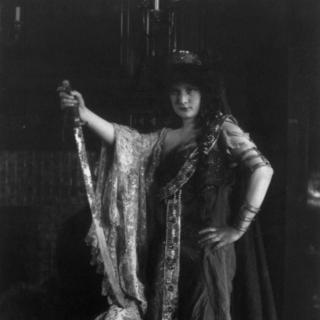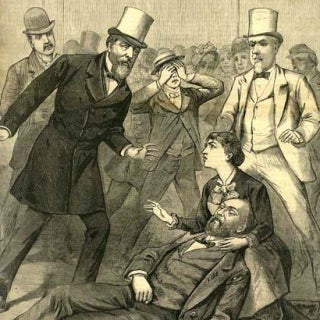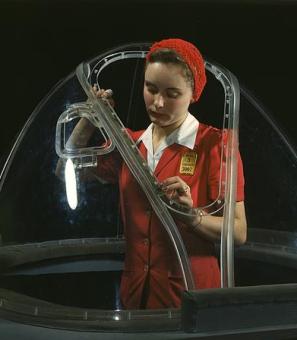D.C.'s Ill-Fated Wedding of the Decade, 1903
Countess Marguerite Cassini, the 21-year-old daughter of the Russian ambassador, had a problem. Her aged suitor, Alexandre Pavlov (Russian ambassador to Korea), was really starting to bore her. Marguerite searched around her circle of friends to decide whom to push him onto and decided on Irene des Planques, another Russian acquaintance. In 1902, she invited Irene to visit Washington. So that Irene should not travel alone, the sly countess suggested she be escorted by — you guessed it — the distinguished Alexandre Pavlov.
Young and beautiful Irene, with her “dark hair and eyes, brilliant complexion, [and] amiability and charm,” was an appropriate lure for Pavlov, whom Cassini described as falling in love with every woman he met.[1] And although Alexandre Pavlov was thirty years older and “ridiculous looking,” he evidentially had a lot of personality to make up for it because when the two arrived in Washington, Irene was wearing his ruby ring.[2] Marguerite smiled smugly to herself and began planning the wedding.
After delivering his betrothed to D.C., the groom left for Korea, intending to return for the wedding in February. Meanwhile, Irene had the time of her life. Turn-of-the-century Washington was a playground for rich, carefree women like Countess Cassini, and Marguerite made sure her friend had a great time. Irene had such a great time that she began to reconsider giving up the single life. A certain handsome German attaché might have also had more than a little to do with her cold feet.[3] When she voiced these doubts to her friend, Marguerite was no less than “horrified” than her plans were threatened. The engagement continued.
It wasn’t until Jan. 18, the very day before the wedding, that doubts resurfaced. In the Russian Embassy, surrounded by the white roses and lilies of her upcoming nuptials, Irene threw a fit. She wouldn’t go through with it; she wouldn’t turn her maidenhood over to the balding Alexandre Pavlov, and leave the glamour of society behind for far-away Korea. It took Marguerite the better part of the day to calm her down. The wedding would still take place.
But wait! Alexandre was back in town, had heard all about his bride’s misgivings, and was furious. He too, took all day to be calmed down, this time by the Russian ambassador himself.
And so, January 19, 1903, the most anticipated event of the winter season arrived. The rooms of the Russian embassy were full to bursting with the best of the Capital. The entire diplomatic corps, the Cabinet, and the Supreme Court were in attendance. While downstairs guests were being shown to their places, the crying bride was being dressed in her finery upstairs. The Parisian gown was made of white satin and gold brocade, and just dripping with pearls.[4] A mantel of lace fell from her shoulders, over a full court train, and a “misty veil of tulle” was fastened to her head with a coronet of orange blossoms.[5] A wedding gift from the groom, a magnificent diamond collar with ruby clasps, encircled Irene’s neck.[6] It might as well have been a noose, the way the doomed bride “dissolved into a storm of tears and hysterical protests.” This time, Marguerite was unable to make a dent in Irene’s unhappiness. She called for her father, the Count:
Frantic, I send for my father. In a minute he appears in the doorway in his court uniform and decorations, as overpowering as the statue of the commander. “No scandal,” he says in a terrifying voice. “Down you go! Get married now you must, and go to hell afterward if you wish!”[7]
And so Irene des Planques descended the grand staircase of the Russian embassy, “white faced [and] shaking like a leaf.” Four Russian orthodox sang a hymn as she approached the altar and her future husband, an “expression of utter misery” on his face.
The wedding itself went off nearly without a hitch. Long by American standards, it lasted about half an hour and followed Russian traditions to the letter. Although newspapers reported at great length on the gowns of the bride and bridesmaids, and listed by name a great many of the 200 guests, about those Russian traditions they were more concise. Some simply noted that the ceremony was “interesting.”[8]
Remember that ‘nearly’ part? There were two things (besides the unwillingness of both the bride and groom, but whatever) that kept the wedding from being the “brilliant and picturesque” event it seemed on the surface.[9] As part of the groom’s party, the handsome German attaché was tasked with holding a crown over the groom’s head during the ceremony. So that’s awkward. Even worse, in the final moment of the ceremony, the bride dropped her candle and set fire to her veil, “an omen of the worst possible luck.”
The ceremony ended with the Bishop Tikhon, head of the Russian orthodox church in America and later a saint, kissing the ‘happy couple’ on the forehead and “warmly congratulating them and wishing them joy in their future life.”[10]
They were divorced within the year.
And so D.C.’s wedding of the decade became also D.C.’s most ill-advised and unlucky wedding of the decade. All because of great friends like Countess Marguerite Cassini.
Footnotes
- ^ “The Pavlow-des Planques Wedding.” The Washington Times. (Washington [D.C.]), 20 Feb. 1903. Chronicling America: Historic American Newspapers. Lib. of Congress.
- ^ Cassini, Marguerite. Never a Dull Moment: The memoirs of Countess Marguerite Cassini. (Harper & Brothers Publishers, 1956).
- ^ Unclear if it was Baron von Ritter zu Groenesteyn or Count Max Montgelas, but either way those are some great names.
- ^ “Golden Image of Ikon: How it will figure at the wedding of Mlle. des Planques.” Essex County Herald. (Guildhall, Vt.), 27 Feb. 1903. Chronicling America: Historic American Newspapers. Lib. of Congress.
- ^ “The Pavlow-des Planques Wedding Last Night.” Evening Star. (Washington, D.C.), 20 Feb. 1903. Chronicling America: Historic American Newspapers. Lib. of Congress.
- ^ “Splendors of the Russian Wedding Tonight: Pavlow-des Planques.” Evening Star. (Washington, D.C.), 19 Feb. 1903. Chronicling America: Historic American Newspapers. Lib. of Congress.
- ^ Cassini, Marguerite. Never a Dull Moment.
- ^ “Russians Wed at Embassy.” Omaha Daily Bee. (Omaha [Neb.]), 20 Feb. 1903. Chronicling America: Historic American Newspapers. Lib. of Congress.
- ^ “Wedding Arranged in Three Days.” Evening Star. (Washington, D.C.), 11 April 1915. Chronicling America: Historic American Newspapers. Lib. of Congress.
- ^ “The Pavlow-des Planques Wedding Last Night.”




![Sketch of the mythical fuan by Pearson Scott Foresman. [Source: Wikipedia]](/sites/default/files/styles/crop_320x320/public/2023-10/Goatman_Wikipedia_Faun_2_%28PSF%29.png?h=64a074ff&itok=C9Qh-PE1)












